That Cristalino Montage – Row 1
I’m not done posting about Cristalino Jungle Lodge yet!
A couple weeks ago I posted a montage of 48 little thumbnails, a hastily put-together headline photo for my final post at Cristalino. I’ve had a request to post a key to them, but I thought I’d instead show the full images in a series of posts, and embellish with a few extra photos.
The first row starts with a Yellow-footed Tortoise, also called Brazilian Giant Tortoise, Chelonoidis denticulata. I saw seven of these during my 10 weeks at Cristalino. The one pictured here was crossing the road on the W bank of the Teles Pires River on our way to the lodge from Alta Floresta.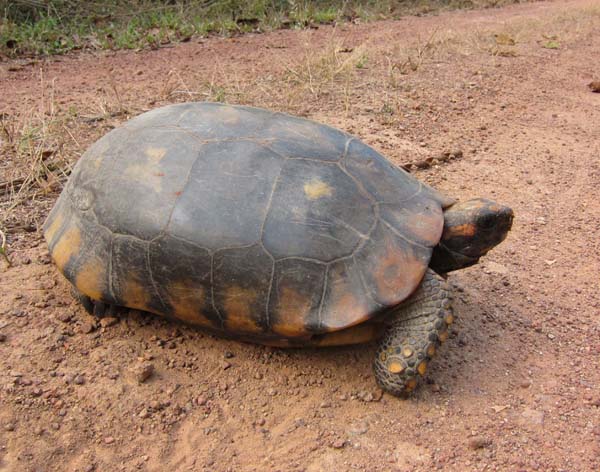
This one was on the Haffer Trail, found by local guide Jorge Lopes and being photographed here by Russ Mittermeier, an expert on testudines (not to mention a renowned primatologist). He pointed out the ticks on the shell of this animal which I removed – apparently Dark-winged Trumpeters can peck at the openings in the carapace created by the ticks, eventually killing the tortoise. This was a very old animal, as evidenced by the smoothness of the carapace.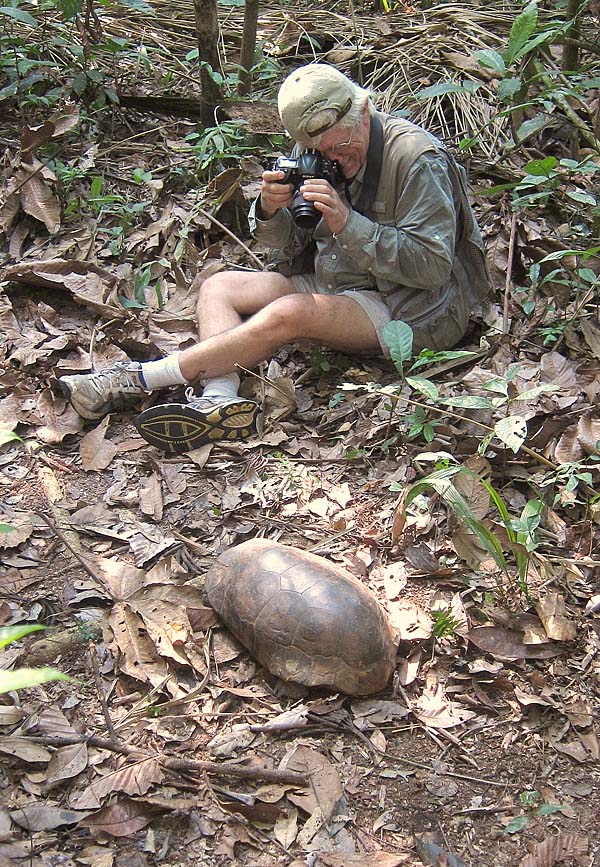
This next one is a Wood Stork, obviously carrying nesting material. It’s not a common bird right at Cristalino, but there are cattle ponds on the other side of the Teles Pires river where they feed, and a big nesting colony is somewhere along that river. And apparently they’ll come quite a ways into the rain forest to find good sticks.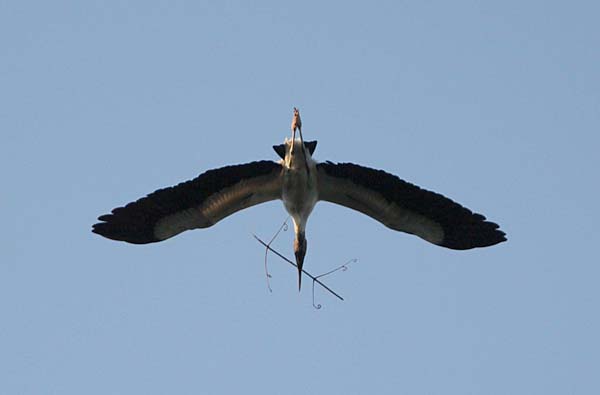
This next photo is of a plant that was flowering in the middle of the Cristalino River – rooted in rocks that are submerged all year except for the last few weeks of the dry season. I’ve only recently found out that this is an undetermined riverweed species in the genus Rhyncholacis, family Podostemaceae. Strange plant!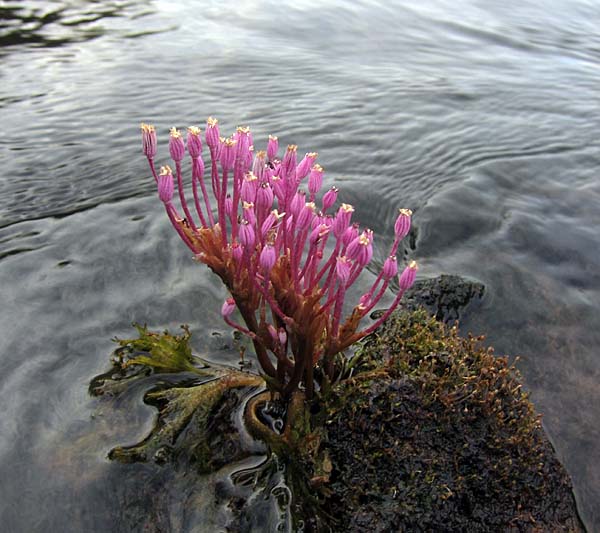
Next is Rufous-tailed Jacamar – the most common and widespread member of the family. This species actually prefers rather open areas, so at Cristalino it was found locally only along the river and also at Limão and on the Ilha Ariosto where the habitat has been cleared. It’s the most approachable of jacamars too.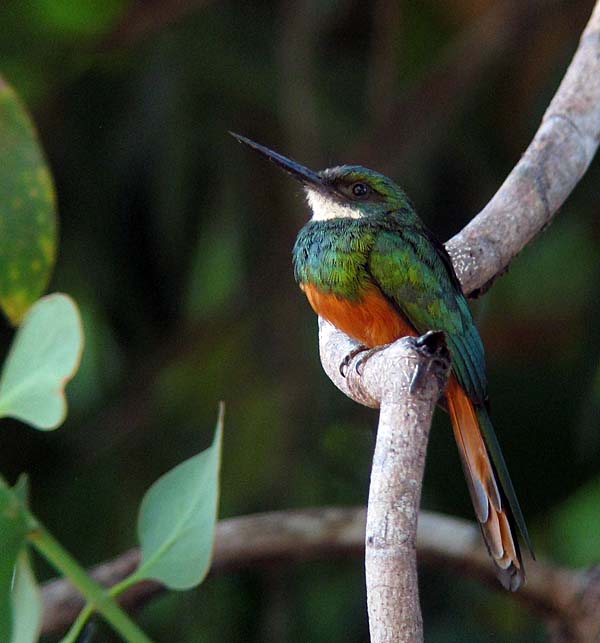
I found these Yellow-lined Tent-making Bats, Uroderma bilobatum on my next-to-last day at Cristalino. One of the other guides had seen them in a previous year on the Castanheiras trail, and I was always trying to remember to look for the telltale sign of their presence – a strangely drooping heliconia, palm, or philodendron leaf which they bite along the mid rib to create the tent. Then I heard the squeaking of bats from the giant Phenakospermum (a close relative of the African bird-of-paradise plants and Madagascar Traveler’s -palm) right next to the kitchen in the lodge clearing!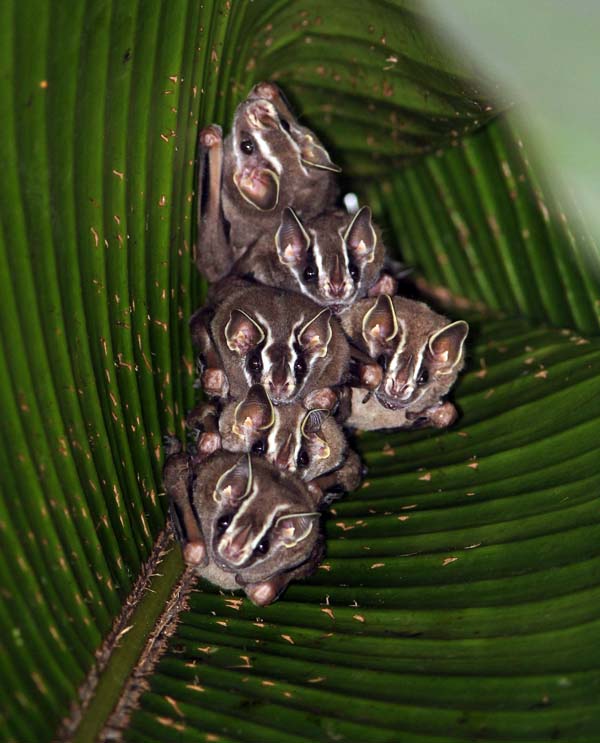
Almost as cute is this Sac-winged Bat, Saccopteryx leptura, one of three that roosted every day of my entire stay on the south side of the library-dorm building – only 20 yards from the previous species. Only after I got close to take this photo did I realize it had a baby attached to its breast.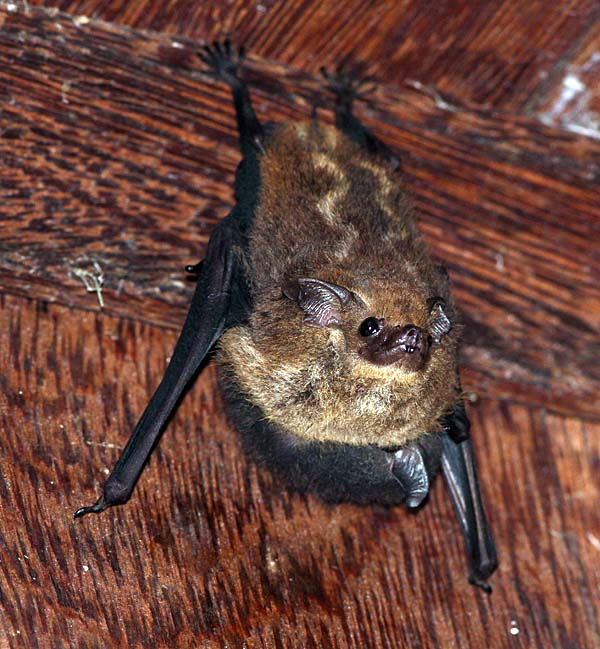
The final photo in the first row is Red-throated Piping-Guan, a very common bird at Cristalino. Most of the day they were very inconspicuous in the tops of tall trees – either by the river, around the lodge, or from the towers, but in early morning pairs would be foraging along the river bank. And I was lucky to catch one in flight as it came in to feed in the açai palm by the kitchen.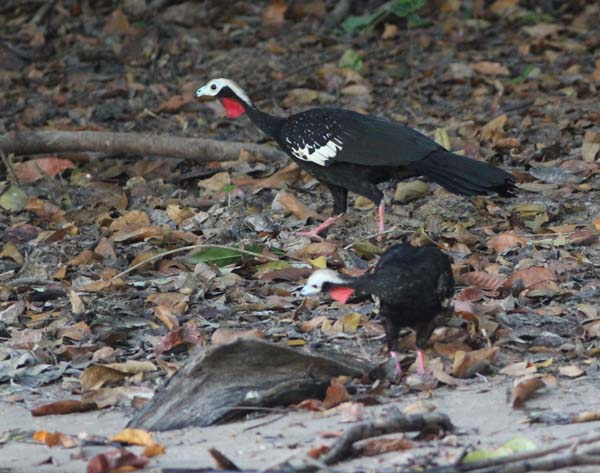
Next week I’ll reveal the identities of Row 2.

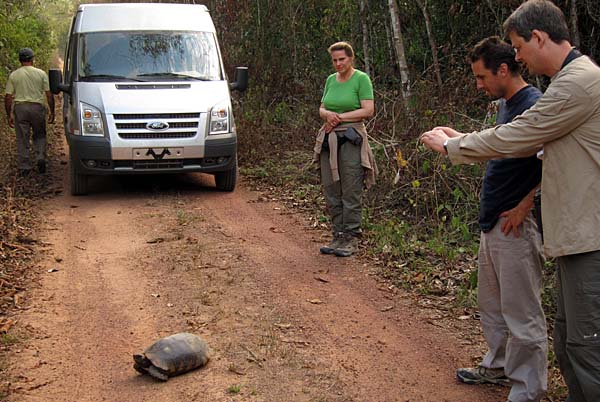
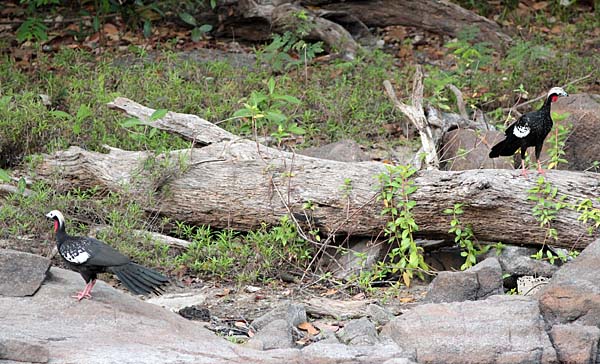
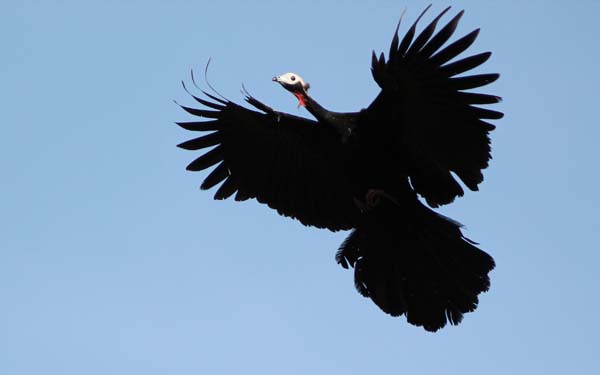
Cool post Rich… looking forward to the second row…